
The Fire Worship Festival of Axi Ethnic People in Mile City, Honghe
Chinese Name:弥勒市阿细人祭火节
English Name: The Fire Worship Festival of Axi Ethnic People in Mile City, Honghe
The Axi Torch Festival is held annually on the third day of the second lunar month in Hongwan Village, Xiyi Town, Mile City, Yunnan, where the Yi people of the Axi ethnic group celebrate a grand and spectacular return to nature in a frenzied and ecstatic manner, seeing fire as the spirit of all things. This festival, dedicated to the fire god, is an ancient tradition passed down through generations, believed to have nearly a thousand years of history. The “Axi” refers to a branch of the Yi ethnic group, who worship fire. According to legend, in ancient times, humans ate raw food, and it was only after discovering the use of fire that they learned to cook. To express gratitude to fire, the ancestors of the Axi have been holding torch ceremonies regularly every year. From the naming ceremony held by the fire pit at birth to various activities throughout their lives, fire is an integral part of the Axi people’s existence, leading them to regard fire as sacred.


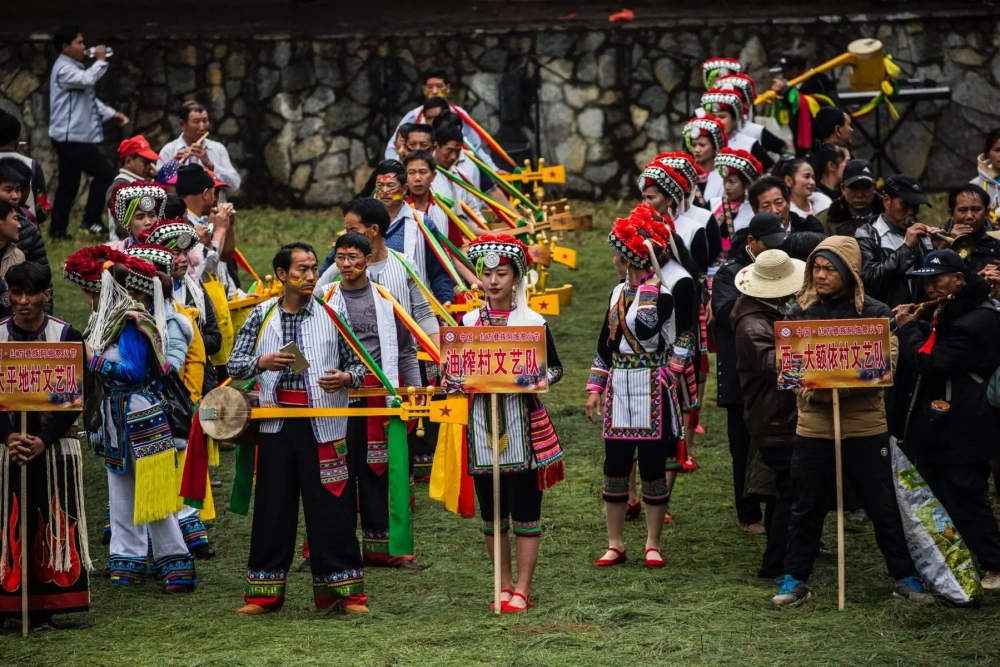



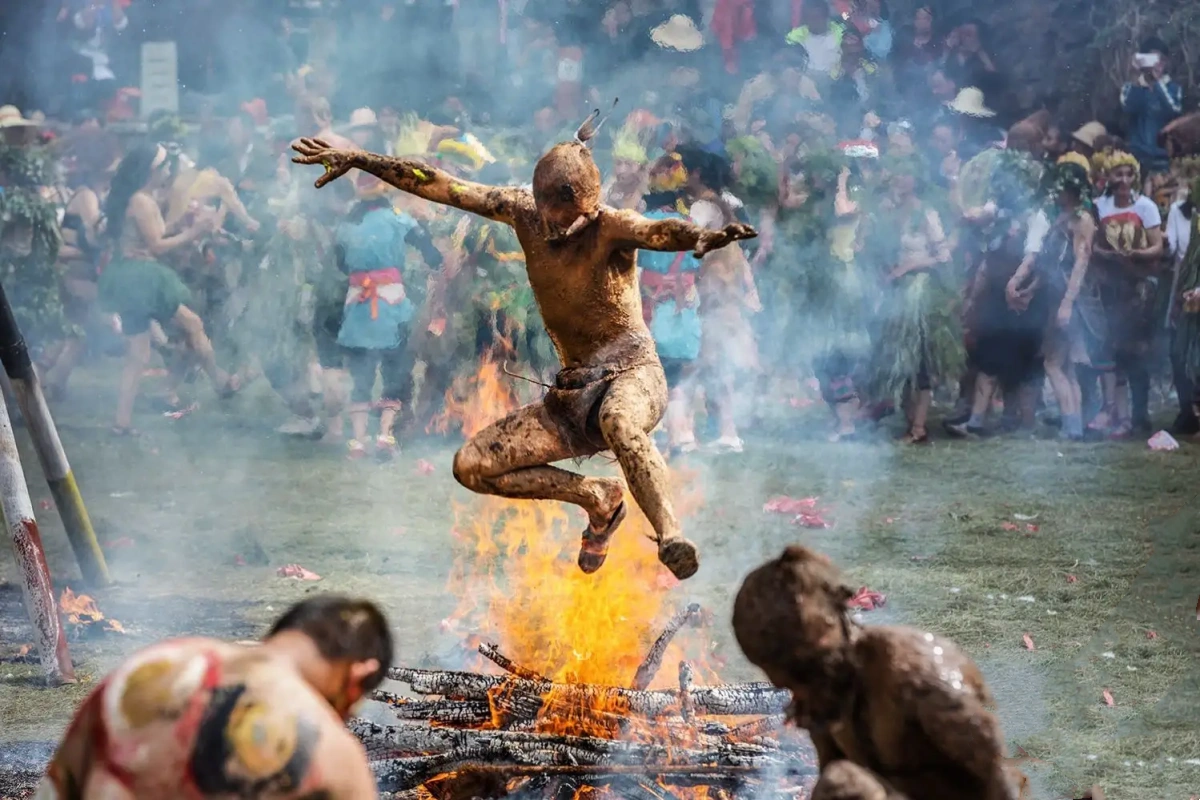
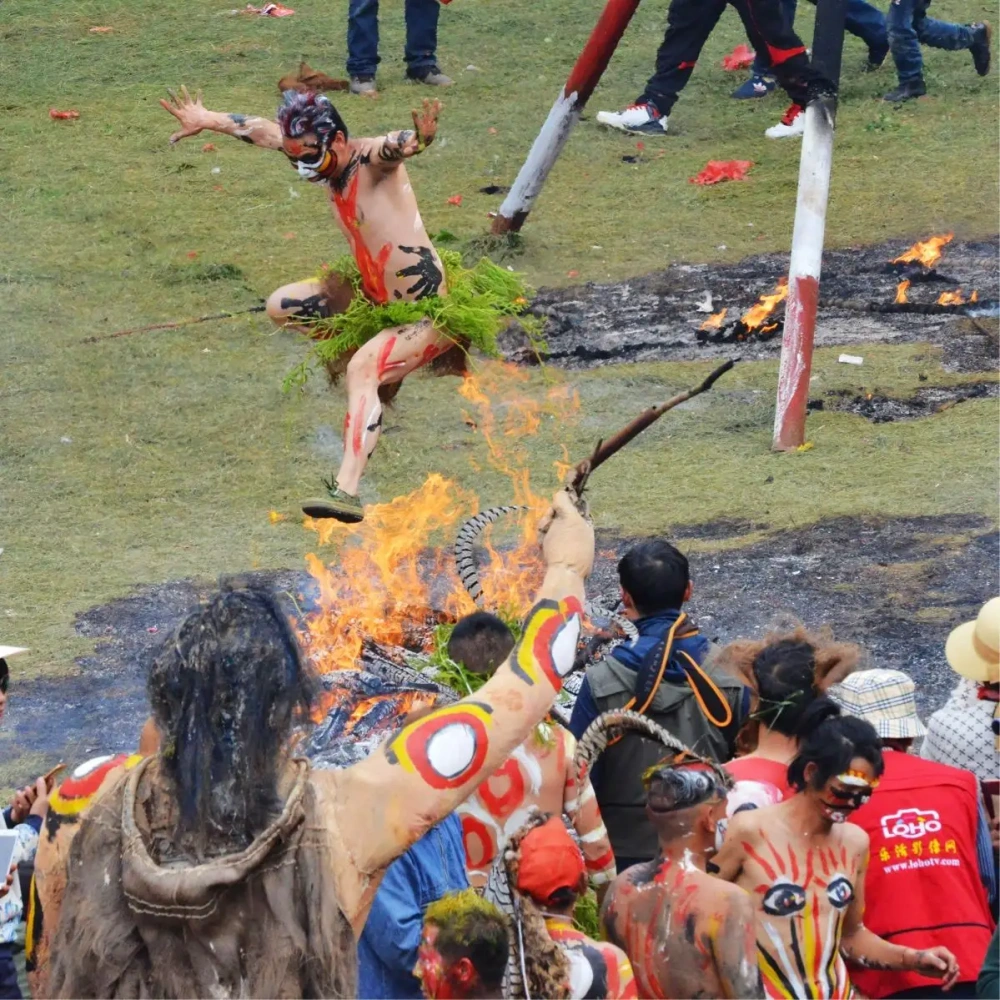












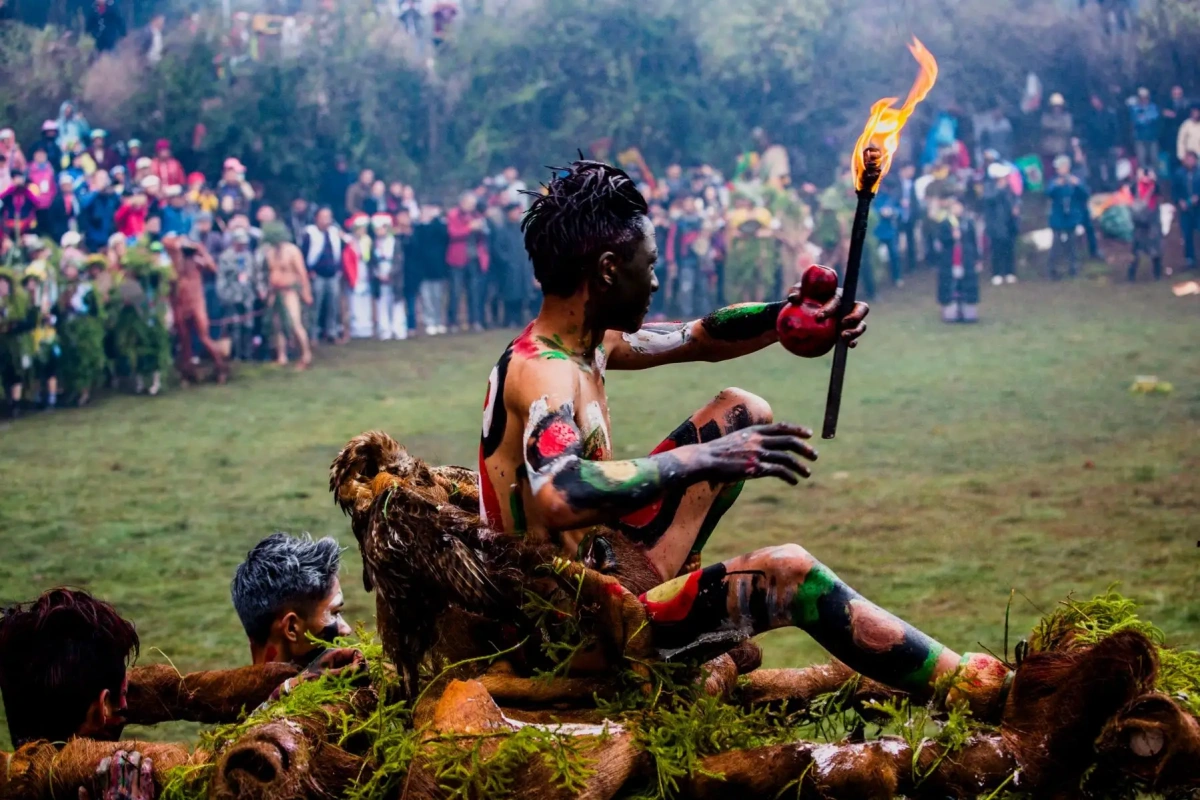
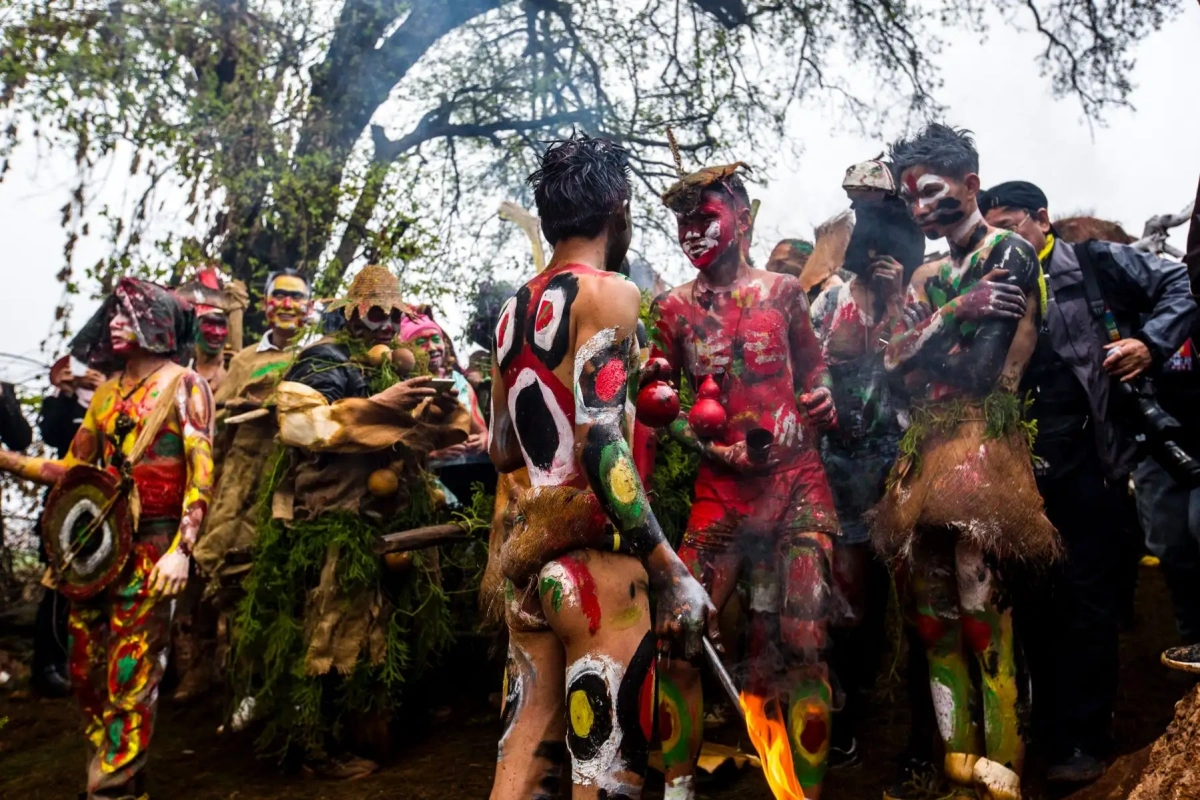
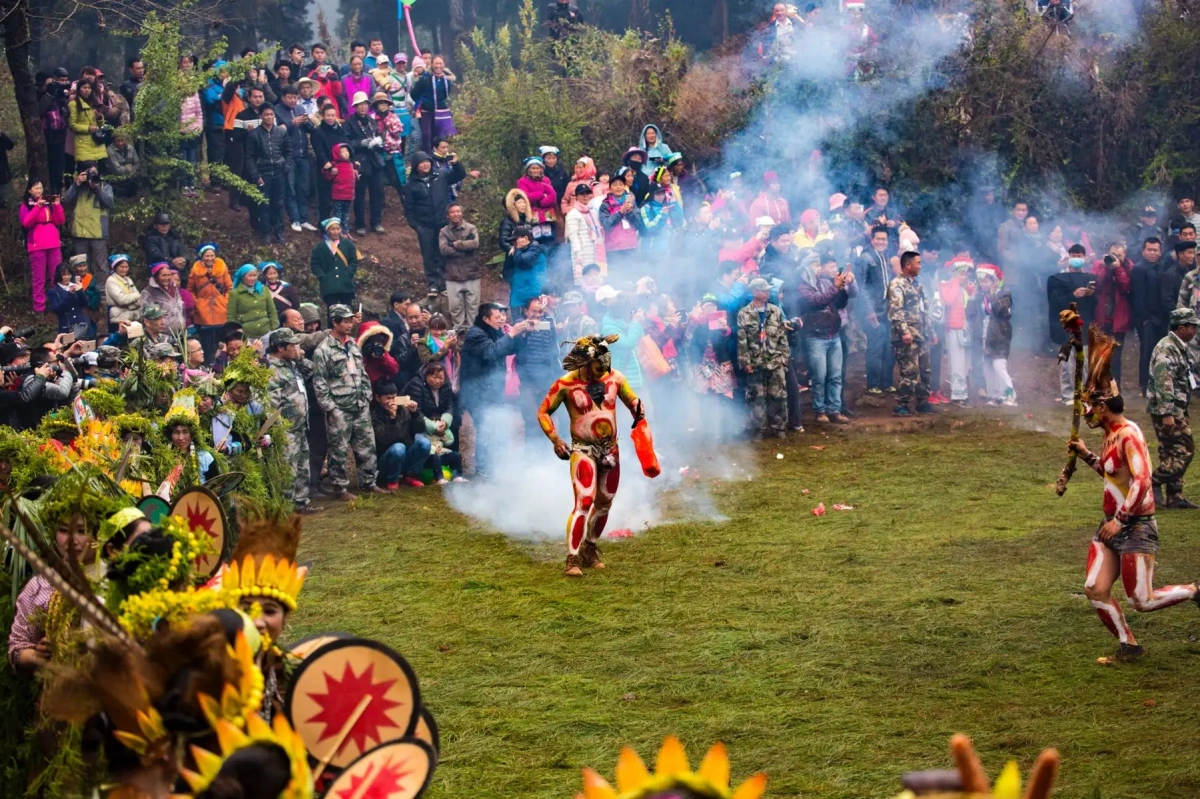
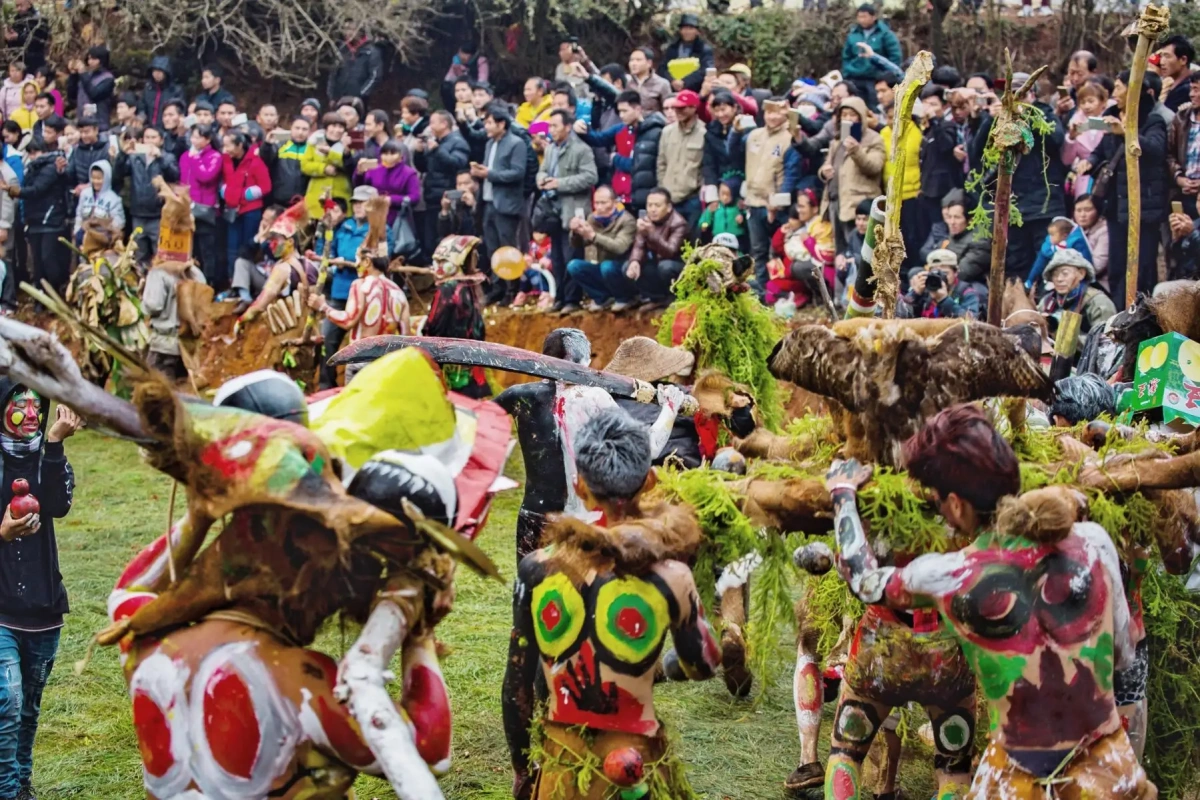

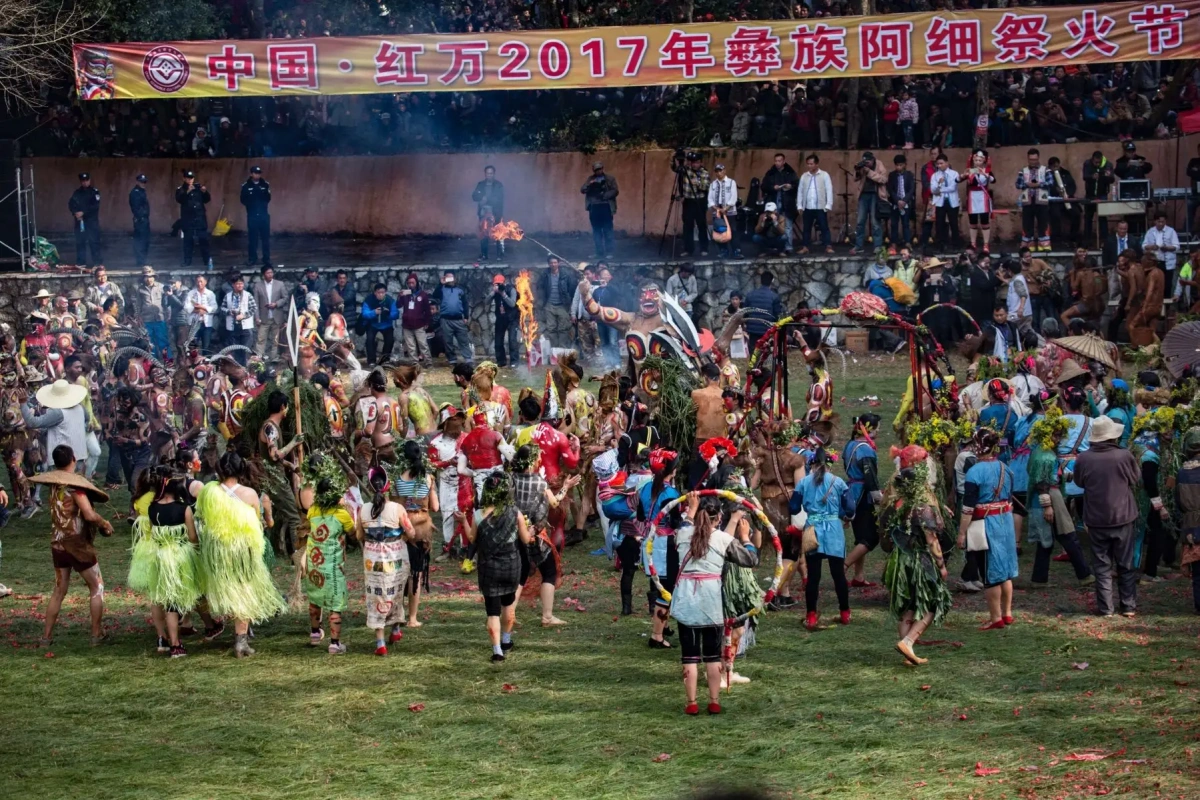

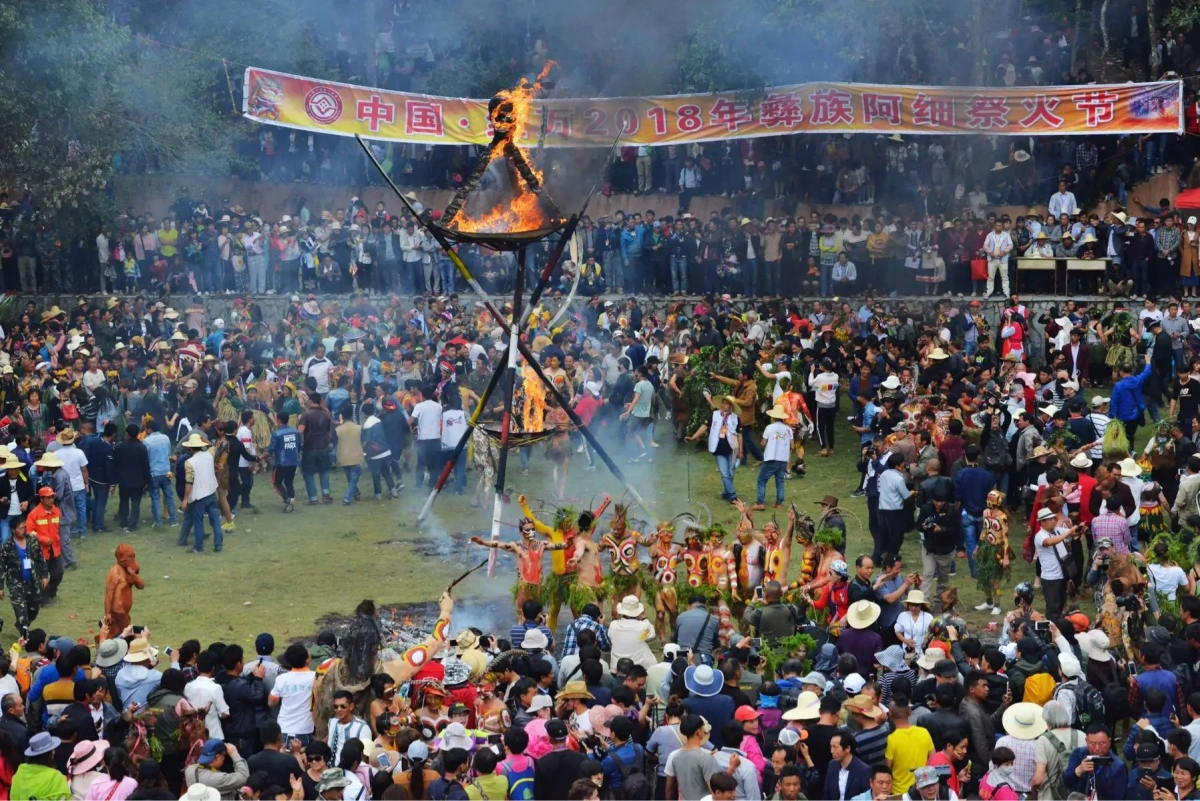
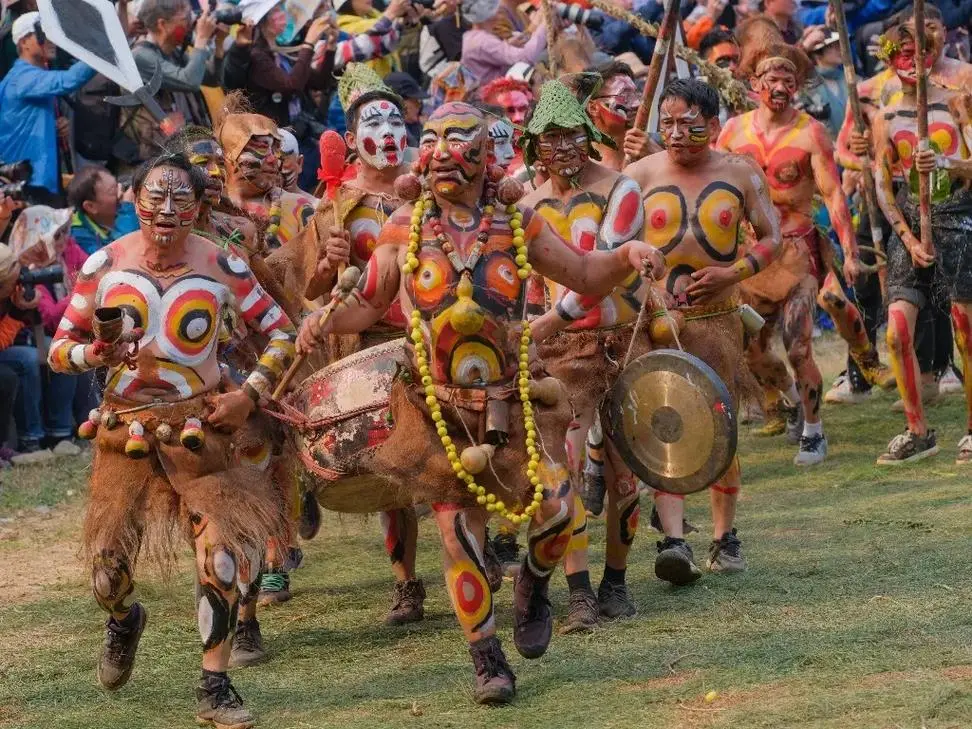
The Axi Torch Festival in Qifei and Hongwan Village is gaining increasing attention from cultural tourists both domestically and internationally due to its unique charm. As the Axi Dance of the Moon is frequently showcased on stages worldwide, the accompanying Axi torch culture is gradually unveiling its mysterious veil. The Qifei Village torch festival is the most original and ancient source of this tradition, while Hongwan Village’s torch festival has successfully promoted it to a global audience, becoming a rising star with government support and attracting countless visitors each year to share in this outstanding ethnic culture.
The Day Before the Festival
On the eve of the festival, a long street banquet is held for tourists. After greetings and pleasantries, dozens of Yi girls bring out bowls of hot, fragrant dishes prepared in advance to express their blessings, respect, and gratitude to the elders. Following this, the villagers elect a handsome young man, known for his singing and dancing abilities, to toast the guests along the banquet and lead everyone in raising their glasses to sing a festive drinking song. As they eat, converse, and sing, the entire mountain village is immersed in a joyous atmosphere.
Festival Day
On the day of the festival, as dawn breaks, the village girls have already dressed up in their carefully sewn traditional garments, while others busy themselves preparing sweet soup with eggs and brown sugar cakes for the guests. After lunch, each household extinguishes their old fire and prepares the cooking utensils for the new fire, patiently awaiting the arrival of the fire god. Meanwhile, selected torch festival participants, led by the elder Bimo, bring offerings and ceremonial vessels to the village entrance to honor the Dragon Tree. Following the solemn and mysterious rituals of the elder Bimo, strong men dressed in coarse linen and wearing iron masks impersonate the fire god and begin the process of fire-making. They take a piece of pine wood, hand it to two men who squat on the ground holding each end, and the fire god rotates a stick between their hands, generating friction. After about ten minutes, smoke begins to rise, and soon a flame slowly ignites…
As night falls, the sacrificial activities become even more vibrant. The streets and alleys of the village are filled with crowds, and the atmosphere of torch festival revelry peaks as bonfires burn brightly. Spectacular scenes such as jumping over fire pits, crossing fire bars, rotating fire wheels, shooting flaming arrows, and navigating through fire obstacles captivate and astonish all who witness them.
Some participants dress as women, cradling fake dolls and humming improvised lullabies, adding a humorous touch to the festivities. The highlight is the Axi Dance of the Moon, where men and women, encircling the bonfire to the vigorous accompaniment of the Sanxian, passionately sing and dance, elevating the fire festival to a climax.
Festival Legends
The Axi people venerate fire, from the naming ceremony performed by the fire pit at birth to various activities intertwined with fire throughout their lives. They believe that fire brings light and warmth, provides cooked food, and drives away ferocious beasts, thus they regard fire as divine. According to legend, the ancient Axi tribe lived without fire, leading a life shrouded in darkness, consuming raw meat and often suffering from attacks by wild animals.
After a flood, a man named Mudeng sat on a rotting log, drilling and grinding with a stick, and gradually, on the third day of the second lunar month, sparks flew, and he obtained fire. From that day on, the era of eating raw food ended, and crops could be cooked, as fire brought light and warmth. The Axi people venerate Mudeng Sailu, the legendary inventor of fire-making by drilling wood, as the “fire god,” a tradition that has been passed down through generations.
Festival Process
Early Morning
On the morning of the Torch Festival, Axi women in Hongwan Village wear new clothes and offer prepared brown sugar, eggs, and sweet rice cakes to guests. After everyone has eaten and drunk to their fill, each family prepares their sacrificial offerings of meat and wine, extinguishes all old fires, and carefully sweeps the ashes from their cooking stoves outside, a practice known locally as “sending out the old fire to welcome the new fire.” This ritual is repeated annually, passed down through generations.
The village’s young men gather in a quiet spot to paint their faces and bodies with tattoos representing the five-colored soil and unique patterns related to fire. They wear “skirts” woven from palm leaves, rattan, and linen around their waists, and adorn their heads with various wild grasses, crops, and wild fruits. Some imitate primitive humans using tree bark and leaves to cover themselves, expressing their primal desires through vigorous dance and shouting.
Midday
Around noon, young men carrying Sanxian and girls dressed like camellias perform the essence of Yi culture, the Axi Dance of the Moon, to welcome villagers and guests. A long banquet stretches along the stone path in the village, where guests from all directions enjoy uniquely flavored Yi cuisine. The banquet tables are filled with large bowls of corn wine, cured meat, and vegetables. Despite being strangers, guests sitting together at the banquet quickly feel embraced by the warmth and openness of the Yi people. At this moment, a respected elder Bimo leads a group of Axi girls along the long street, singing a drinking song that flows like fine wine, conveying the deep blessings of the Yi people, allowing each guest to connect emotionally with the Axi villagers.
Around 3 PM
The time has come to honor the fire god. With a command from the elder Bimo, two strong, tattooed young men lift the carefully crafted “fire god” and, guided by the elder Bimo and the fire festival master, walk in a frenzy, surrounded by a troupe of musicians playing the Sanxian and naked performers with painted bodies, holding wooden swords and other “weapons,” towards the Dragon Tree. There, they drill wood to create fire using primitive methods. The elder Bimo, along with several elders, sets up a table in front of the towering ancient “god tree,” placing two bowls of wine and offering incense while circling the tree with a rooster, chanting incantations. Then, at the prepared fire god’s altar, they insert a piece of wood into a rotting log and begin drilling vigorously. After some smoke, the first spark ignites. The fire obtained is transferred to the fire basin under the “fire god.” As the fire is raised, firecrackers, gongs, drums, and cowhorns burst into sound, and people cheer and congratulate, clearing a path for the “fire god” with branches tied with many wooden swords.
The “fire god” parades through the village, receiving worship from the villagers as they sprinkle wine on the fire and offer meat to the basin. The procession shouts a traditional phrase in a playful tone, dancing and skipping, while husbands tease their wives, who do not recognize them, making exaggerated faces, and young men entertain shy girls. Laughter follows them wherever they go. When they reach a plot of land outside the village, everyone kneels barefoot, bowing to the earth that nurtures all things, kissing the ground to express gratitude to Mother Earth, merging with the land until they feel as if they have returned to the ancient Axi tribe…
After every household obtains their fire, the “fire” is brought to the largest courtyard in the village, where a bonfire is lit. The tattooed men, unrecognizable to each other, perform various animal imitations in a joyful dance, using whatever objects they have as makeshift “musical instruments”—whether it be a small sieve as a moon lute, short sticks as flutes, or long sticks as erhu. The music comes from the villagers’ voices. Some men dress as women, cradling dolls and humming improvised indigenous songs. Others call out as they jump over bonfires, cross fire bars, shoot flaming arrows, and spin fire wheels. In this joyful atmosphere, people reluctantly throw the “fire god” and their “weapons” or “musical instruments” into the bonfire.
Significance
This signifies that all impurities and evils have been burned away, and the “fire god” will bless the next harvest with abundance and prosperity. At that moment, as the robust sounds of the Sanxian echo, people of all ages—young and old—jump into the Axi Dance of the Moon, fully expressing their greatest desires and joys of the year.



















 7 Days GolfingTour
7 Days GolfingTour
 8 Days Group Tour
8 Days Group Tour
 8 Days Yunnan Tour
8 Days Yunnan Tour
 7 Days Shangri La Hiking
7 Days Shangri La Hiking
 11 Days Yunnan Tour
11 Days Yunnan Tour
 6 Days Yuanyang Terraces
6 Days Yuanyang Terraces
 11 Days Yunnan Tour
11 Days Yunnan Tour
 8 Days South Yunnan
8 Days South Yunnan
 7 Days Tea Tour
7 Days Tea Tour
 8 Days Muslim Tour
8 Days Muslim Tour
 12 Days Self-Driving
12 Days Self-Driving
 4 Days Haba Climbing
4 Days Haba Climbing
 Tiger Leaping Gorge
Tiger Leaping Gorge
 Stone Forest
Stone Forest
 Yunnan-Tibet
Yunnan-Tibet
 Hani Rice Terraces
Hani Rice Terraces
 Kunming
Kunming
 Lijiang
Lijiang
 Shangri-la
Shangri-la
 Dali
Dali
 XishuangBanna
XishuangBanna
 Honghe
Honghe
 Kunming
Kunming
 Lijiang
Lijiang
 Shangri-la
Shangri-la
 Yuanyang Rice Terraces
Yuanyang Rice Terraces
 Nujiang
Nujiang
 XishuangBanna
XishuangBanna
 Spring City Golf
Spring City Golf
 Snow Mountain Golf
Snow Mountain Golf
 Stone Mountain Golf
Stone Mountain Golf














